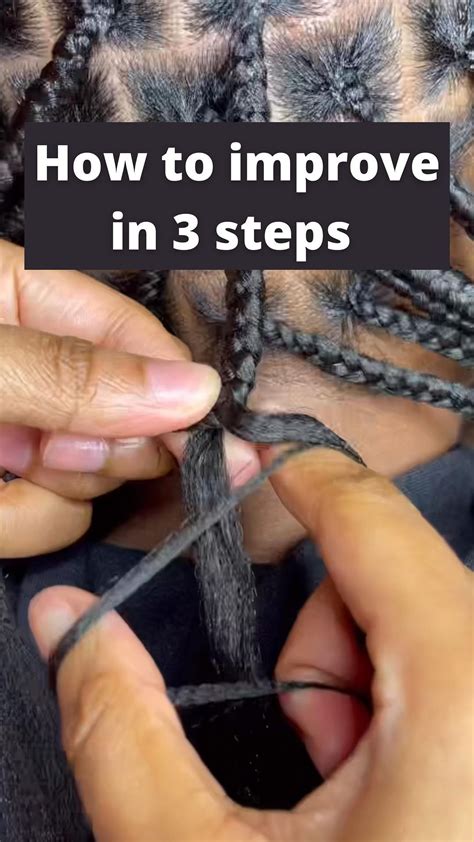Braided hairstyles are timeless and versatile, adding beauty and elegance to any occasion. Whether you’re rocking cornrows, box braids, or Senegalese twists, the right braiding hair can make a world of difference.

Factors to Consider When Choosing Braiding Hair
Length: Determine the desired length of your braids before selecting hair. Common lengths range from 12 inches to 48 inches.
Texture: Braiding hair comes in various textures, including synthetic, human, and natural. Synthetic hair is inexpensive but may lack the natural look and feel of human hair. Human hair, on the other hand, is more expensive but offers a more authentic appearance and durability.
Thickness: The thickness of the hair will affect the number of braids you can create. Thicker hair will result in fewer braids, while thinner hair will result in more braids.
Density: Density refers to the fullness of the hair. Braiding hair with high density will create thicker, more voluminous braids.
Types of Braiding Hair
Synthetic Braiding Hair
-
Pros:
- Affordable
- Comes in a wide range of colors and styles
- Less prone to tangling and shedding
-
Cons:
- May not look as natural as human hair
- Can be difficult to blend with natural hair
- More prone to heat damage
Human Braiding Hair
-
Pros:
- Natural-looking
- Can be colored and heat-styled
- Blends well with natural hair
-
Cons:
- More expensive than synthetic hair
- Requires more care to maintain
- More prone to breakage and shedding
Natural Braiding Hair
-
Pros:
- Very natural-looking
- Can be washed and styled like natural hair
- Extremely durable
-
Cons:
- The most expensive type of braiding hair
- Can be difficult to find
- Requires regular care and maintenance
Other Considerations
Brand: Reputable brands offer high-quality hair that is less likely to tangle or shed.
Price: Braiding hair ranges in price depending on the type, texture, length, and brand.
Hair Care: Different types of braiding hair require different care routines. Synthetic hair should be washed with sulfate-free shampoo and conditioner, while human hair can be washed and styled like natural hair.
How to Choose the Best Braiding Hair for Your Needs
Consider your hair type and texture: If you have fine hair, opt for thinner braiding hair. If you have thick hair, you can use thicker hair.
Decide on the desired braid style: Different braid styles require different hair lengths and densities.
Set a budget: Braiding hair can range in price from a few dollars to several hundred dollars.
Read reviews: Research different brands and hair types to see what other customers say about their experiences.
Step-by-Step Approach to Braiding Hair
Materials:
- Braiding hair
- Rat-tail comb
- Bobby pins
- Hairspray (optional)
Instructions:
- Prep your hair: Wash, condition, and detangle your hair. If desired, apply a light leave-in conditioner or oil.
- Section your hair: Divide your hair into small sections, depending on the size of braids you want.
- Create a foundation: Braid a small section of your natural hair at the base of your scalp to create a foundation for the braiding hair.
- Attach the braiding hair: Tie or sew the braiding hair to the foundation braid.
- Braid the hair: Braid the braiding hair and your natural hair together, using your preferred braiding method.
- Secure the braid: Tie or sew the end of the braid to secure it.
- Set the braid (optional): Spray the braid with hairspray to hold it in place.
FAQs about Braiding Hair
Q: What are the most popular braiding hair brands?
A: Some of the most popular braiding hair brands include Kanekalon, X-Pression, Darling, and Moesha.
Q: How long can braiding hair last?
A: The lifespan of braiding hair depends on the type of hair, care routine, and frequency of wear. Synthetic hair can last for several months, while human hair can last for up to a year.
Q: Can I color braiding hair?
A: Yes, you can color human braiding hair with a semi-permanent or permanent hair color. However, synthetic hair cannot be colored.
Q: How do I take care of my braiding hair?
A: To care for your braiding hair, wash it regularly with a sulfate-free shampoo and conditioner. Deep condition the hair every few weeks to keep it healthy and hydrated.
Troubleshooting Braiding Hair Issues
Problem: Braiding hair tangling
Solution: Use a detangling spray or brush and gently work through the tangles.
Problem: Braiding hair shedding
Solution: Choose high-quality hair and avoid pulling or brushing too harshly.
Problem: Braiding hair breaking
Solution: Use proper hair care techniques and avoid over-tightening braids.
Problem: Braids slipping
Solution: Secure the braids with bobby pins or hairspray.
Creative Applications for Braiding Hair
Beyond traditional braiding: Braiding hair can also be used for beading, hair jewelry, and hair extensions.
Statement hairstyles: Experiment with different braid patterns and colors to create eye-catching hairstyles.
Functional braids: Braids can be used to keep hair out of your face during workouts or protect it from the elements.
Conclusion
Choosing the best braiding hair can elevate your braided hairstyles to new heights. By considering the factors mentioned in this guide, you can select hair that meets your needs and creates the desired look. With proper care and maintenance, your braiding hair will enhance your beauty and confidence for months to come.
